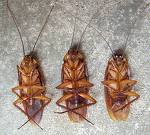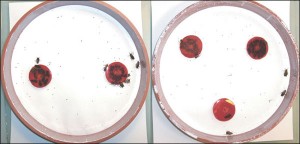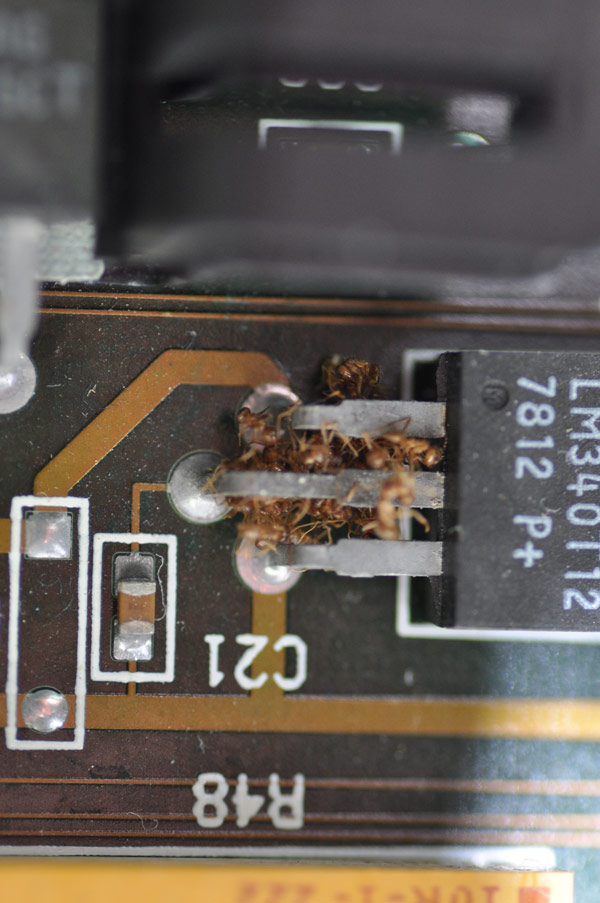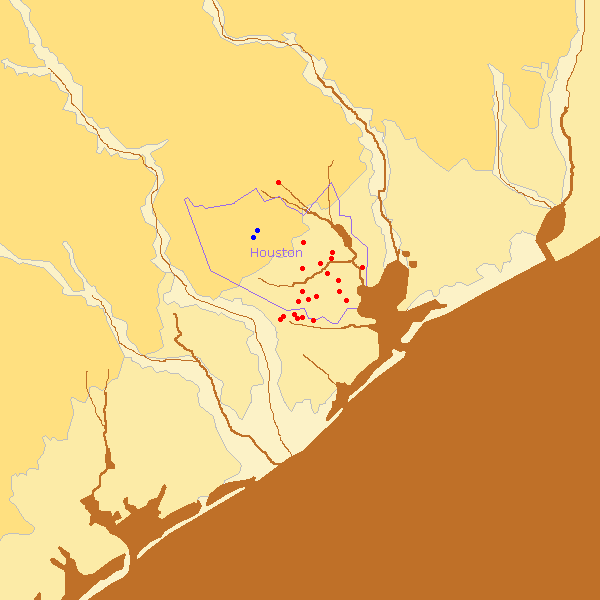Cockroaches, Blattella germanica, are one of the insect species that live in groups and benefit from the survival style. In groups, they reproduce more, share their resources like food and shelter, and it prevents desiccation. Communication is essential in groups, and thus it is interesting to examine how these cockroaches communicate with each other and how the groups make decision.
Halloy set out to explore cockroach group behavior by placing the insects in a dish that contained 3 shelters, and observe how the cockroaches would divide themselves into the shelters. It is then found that when each of the 3 shelters could contain only 40 bugs, the cockroaches divided themselves into 2 groups of 25 and occupied only 2 of the shelters, leaving the last shelter empty. When the shelters had a capacity of more than 50 bugs each, all the cockroaches occupied just a single shelter (Jennifer, 2006). Decision-making was made through various forms of communication among the insects, including antenna probing and touching. Halloy and colleagues then concluded that these cockroaches optimizes their group size and strike a balance between cooperation and competition for resources.
Such behavior that allows the cockroaches to optimize their group size is indeed supported by other literature. Mathieu, Loic and Colette (2009) found that cockroaches that are rearer in social isolation develop certain negative behavioral syndromes, including reduced foraging activity and reduced ability to assess mating partner quality. This shows that living in groups,optimizing group size and sharing of resources are the best survival ways for cockroaches to reproduce and survive.
References:
Jennifer Viegas (30 March 2006). Animal Planet News. Discovery Communications. Available at: http://animal.discovery.com/news/briefs/20060327/cockroach.html
Mathieu L., Loic, B., Colette R. (2009) The weight of the clan: even in insects, social isolation can induce a behavioural syndrome. Behavioural Processes, 82(1), 81-84. Available at: http://www.sciencedirect.com/science?_ob=ArticleURL&_udi=B6T2J-4VY2C7V-2&_user=10&_coverDate=09%2F30%2F2009&_rdoc=1&_fmt=high&_orig=search&_sort=d&_docanchor=&view=c&_searchStrId=1279851995&_rerunOrigin=google&_acct=C000050221&_version=1&_urlVersion=0&_userid=10&md5=a797fd075ac1a5cfc72fae290a9eba53






